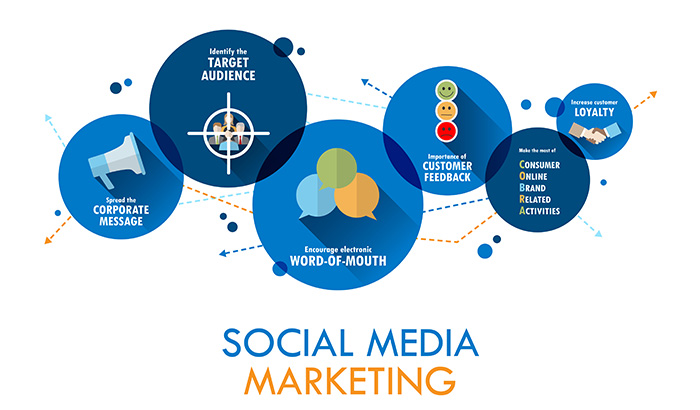Marketing products, services, and even ideas have undergone a seismic shift, with social media emerging as a dominant force in this transformation.
Social media platforms have intertwined our daily lives, giving businesses unparalleled opportunities. These platforms have turned consumers into active participants, blurring the lines between advertiser and audience. It’s not just about broadcasting a message anymore — it’s about creating a conversation.
Central to this dialogue is the myriad of social media metrics that gauge engagement. Among these, the ubiquitous “like” stands tall. Those tiny thumbs-up or heart icons have become more than just virtual nods of approval. They’re digital currencies, testaments to a post’s resonance, and, for many, indicators of marketing success.
But what about “likes” has caught the fancy of marketers and consumers alike? Are they just fleeting affirmations, or do they hold deeper significance in the grand scheme of social media marketing?
Dive in with us as we delve into the world of social media likes, understanding their value, their limitations, and their role in crafting successful digital campaigns.
The Psychology Behind Social Media Likes
Humans have always sought connection, validation, and belonging. This innate desire has evolved in the digital era, mainly through interactions with social media and the allure of “likes.”
On a broader scale, beyond the individual’s quest for validation, “likes” play a pivotal role in shaping perceptions, trends, and even cultural narratives. For content creators, influencers, and brands, the number of likes is a barometer of success, indicating which content resonates with the audience and which falls flat.
When a post garners a significant number of likes, it sends a message: This content is relatable, valuable, or interesting. It helps creators and marketers understand their audience’s preferences, allowing them to tailor future content more effectively. For the audience, a highly liked post often signifies trending topics or popular opinions, guiding them on what’s currently capturing collective attention.
Moreover, likes serve as social proof. We often rely on such indicators to sift through the noise in a world overloaded with content. A post with numerous likes can be perceived as more trustworthy or credible, nudging users to engage with it by reading, sharing, or even making purchase decisions based on it.

The Good: Advantages of Tracking Social Media Likes
As with any tool in our marketing arsenal, understanding how to interpret and harness the power of social media likes can significantly enhance our strategies. These seemingly simple engagements can reveal a goldmine of insights when used wisely.
1. Audience Engagement: Gauging Content Preferences Through Likes
Each “like” signals audience interest or appreciation. By observing which posts garner more likes, brands can discern content preferences, allowing them to tailor their strategy for higher engagement.
2. Visibility: Likes Boost Content in Feed Algorithms
Social media algorithms often favor popular posts. When a post rapidly gathers likes, it’s more likely to be prominently displayed in followers’ feeds, increasing its organic reach.
3. Credibility: Likes Enhance Brand Trustworthiness
In the online realm, many likes signal social proof, indicating content value and trustworthiness. For brands, a well-liked post can reinforce their authority and credibility to potential customers.
4. Immediate Feedback: Likes as a Barometer for Content Reception
The rapid feedback from likes lets businesses gauge content reception swiftly. A surge of likes suggests a winning strategy, while fewer likes hint at the need for content recalibration.
The Limitations: Why Likes Shouldn’t Be the Sole Metric
While the power of a “like” in the realm of social media marketing is evident, it’s essential to approach this metric with a well-rounded perspective. Like any tool, it has its limitations.
We’re here to highlight why, in the diverse toolkit of social media metrics, likes shouldn’t be the only instrument we rely upon.
1. Superficial Engagement: Likes Don’t Always Reflect Depth
A “like” is a quick, easy interaction. While it indicates appreciation, it doesn’t necessarily imply a deep connection or commitment to a brand. To fully understand engagement, delve into social media metrics indicating more profound interactions, such as comments or post view durations.
2. Inauthentic Boosting: Beware of “Like” Farms and Paid Engagements
The temptation for quick popularity has birthed “like” farms and engagement-selling services. Though they offer an immediate boost, this engagement is fleeting and insincere. It can skew data and might lead to platform penalties, impacting reach and trustworthiness.
3. Changing Algorithms: Adapting to the Fluid Social Media Terrain
Social media algorithms are ever-changing, affecting content visibility. A strategy anchored solely in likes may not stand the test of time. Diversifying tracked metrics makes a brand’s approach more versatile and future-ready.
4. Pressure on Content Creators: The Balance Between Likes and Authenticity
The digital push for “like-worthy” content can sometimes eclipse authenticity. Prioritizing likes over genuine content can misalign a brand from its true identity. Brands that resonate often prioritize authenticity over fleeting digital trends.

Other Valuable Metrics to Consider
By diversifying the social media metrics we monitor, we gain a richer, more nuanced understanding of our audience and the efficacy of our campaigns. Here are some other valuable metrics that deserve attention:
1. Comments & Shares: Delving Deeper into Engagement and Reach
A “like” acknowledges content, but comments and shares denote deeper engagement. Comments reveal active participation and can offer insights to enhance brand-audience connection. Shares amplify content, reflecting its value to users and acting as modern word-of-mouth promotion.
2. Click-through Rate (CTR): Unveiling Authentic Interest and Path to Conversions
CTR gauges the ratio of link clicks to post views, spotlighting genuine interest. High CTRs suggest captivating content or effective calls-to-action, marking an essential stage toward potential conversions.
3. Conversion Rate: From Digital Interactions to Real-World Results
While likes and comments show online engagement, the conversion rate tracks tangible actions, from product purchases to webinar sign-ups. It’s a pivotal metric, revealing the tangible ROI from social media efforts.
4. Follower Growth Rate: Monitoring Brand Resonance and Strategy Effectiveness
Beyond being a mere number, tracking follower growth offers a lens into brand resonance and content strategy effectiveness. A consistent rise indicates growing brand appeal and successful outreach, while stagnations might hint at areas needing revision.

Best Practices for a Social Media Marketing Strategy
Crafting an effective social media marketing strategy requires a nuanced understanding of the landscape, a keen eye for trends, and a commitment to a genuine connection with your audience. It’s about painting a picture with a diverse palette rather than just one color.
Here are some best practices to guide you in creating a robust and impactful social media marketing strategy.
1. Diversified Metrics: Embracing a Broader Engagement Perspective
Likes provide insights but only capture part of the engagement story. A holistic strategy examines likes alongside other metrics such as comments, shares, and conversion rates. This wider lens enables brands to grasp their content’s full impact, guiding more nuanced decisions.
2. Engaging Content: Prioritizing Genuine Connections
A viral post might garner instant attention, but authentic content builds enduring relationships. Instead of chasing likes, craft genuine posts that mirror your brand’s essence and values. This approach deepens trust and nurtures a dedicated community around your brand.
3. Regular Analysis: Evolving Through Continuous Reflection
In the ever-shifting digital landscape, regular reviews are paramount. Periodically assess your social media metrics, gauge content success, and solicit audience feedback. By iteratively fine-tuning based on insights, your strategy stays pertinent and impactful.
4. Adaptability: Staying Agile in the Digital Realm
With platforms frequently updating algorithms and features, adaptability is key. Keep abreast of changes by joining forums, attending webinars, or subscribing to industry updates. By staying informed, you ensure your strategy remains in sync with digital evolutions.
Incorporating these principles empowers brands to craft a data-driven and human-centric strategy. Behind every digital interaction lies a person seeking connection. Your brand becomes a cherished voice in the vast digital dialogue by valuing authentic engagement and continually honing your tactics.

Raise the Bar With REVITY
When it comes to social media and other facets of digital marketing, having a knowledgeable partner is vital. With 120 years of collective expertise, REVITY stands as a source of excellence. We are more than a marketing agency; we’re partners dedicated to your business’s growth, with integrity at our core.
In the competitive marketplace, REVITY’s mission is clear: to heighten our clients’ presence with a comprehensive marketing strategy, benefiting businesses and consumers. We don’t just elevate business outcomes; we impact lives, aiming for a brighter, more prosperous world for all.
For a value-driven, committed marketing partnership, choose REVITY. Let’s envision a thriving future for businesses and the people they serve. Reach out to REVITY and discover how your business can flourish with our team guiding your digital journey.







